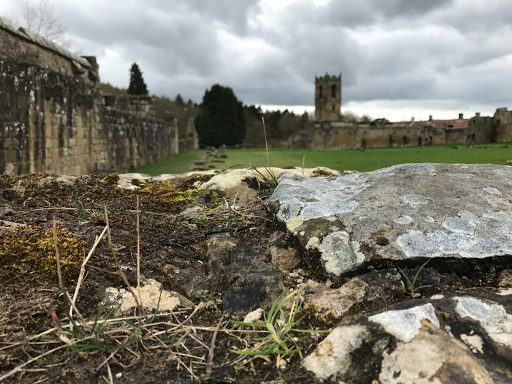 |
Rising ground
|
It was late September and veteran Ragged Rambler, Mr. Dan
Many Coats, and I were exploring churches in south Norfolk. That day, we had already
visited Illington, Bressingham and East Harling, and were now on the road to St
Andrew, Frenze, a short distance from Diss. This lovely little church, in
the words of the inestimable D.P. Mortlock & C.V. Roberts, ‘has to be
sought out, but [is] worth the effort.’ So it proved to be (even though, upon arrival, the church locked)
The church is situated next to Frenze Hall, and requires a
drive of about half-a-mile or so through the hall grounds. Sitting atop a small
hill (this is Norfolk, so anything over sea level constitutes a hill!),
something about this humble little country church set our ‘church fanciers’
radars twitching with anticipation. As you will see from the photograph, it is
basically a nave with a bell-turret and a Tudor brick porch. The church is
under the care of the Churches Conservation Trust, so we were a little
surprised to find it locked. However, as you will see, in many ways this turned
out to be something of a blessing.
 |
| Tudor period brickwork |
Despite initial disappointment we were soon buoyed by the
elixier of all Ragged Ramblers – tea! So, we opened our flasks and poured a cup
and stood the tea to cool a while, before beginning to explore the exterior of
the church.
The first discovery we happened upon was this little
angel etched into the glass of the window immediately east of the porch. A
crowned angel with curly locks and wings, hovering above a skull and crossbones; most likely drawn by a glazier some time during the late eighteenth/early
nineteenth century by our estimation.
‘A lovely thing!’ exclaimed Mr. Many Coats.
 |
Flask + Mortlock & Roberts, 'Norfolk Churches'
|
Having perambulated the church we returned to the sill where our tea and a well-thumbed copy of Mortlock & Roberts awaited us. As
we sat and chatted, it dawned on us what a wonderful Tudor creation this porch
was. As is our want, we began to extemporise and were soon conjuring up the scene during the 1500’s as the brickies
constructed it. They would have sat and had a sup of ale and got a yarning,
just as we were doing. Their days were just as familiar and ‘workaday’ as ours,
and yet, for all of the centuries dividing us, we both live(d) during extraordinary
times; times of social massive social change, contagion and uncertainty.
‘To think that those Tudors coped with the Reformation
and all that other stuff without tea… well, it’s a wonder really isn’t it!’
 |
The impression of fingers lingers...
|
It was during this conversation that Dan noticed some
finger-prints impressed into one of the bricks; the prints of three fingers to
be precise. We love discoveries like this! Human touches like these connect us imaginatively with the past in an intimate way. It’s a bit like those carved wooden heads on
bench-ends in our churches that shine from the instinctive touch of countless
generations of visitors, or – to give a specific example – the tiny paw-prints left
by kittens who padded across the wet clay tiles as they lay out in the summer
sun at a brick-field so many summers ago, and which, today, can be found on the
floor within the grand setting of Salle church (click HERE for more about this).And then Dan spotted something else. On the east face of
the buttress immediately west of the porch window was a small graffito. What makes
this one so unusual is that, judging from the paleography, it was carved during
the Late Medieval period – probably, the fifteenth century. Probably many such carvings
were made, but very few survive in external settings like this. Unfortunately,
we weren’t able to decipher it, but it was a great thing to find (one of only
three such medieval examples I’m aware of on Norfolk churches).
Writing as I am, on the eve of our second lockdown in Britain,
it’s likely that many churches will, regrettably, remain locked. However, as our
visit to Frenze proves, taking a good close look at the exteriors of churches can
prove to be richly rewarding – and that’s without looking at the gravestones.
Frenze, truly is a charming little church and
I intend to return to explore its interior as soon as I can. If it’s half as
good on the inside as it is outside, then I’ll be one happy Ragged Rambler!
Composed by Munro Tweeder-Harris, Esq.
© Ragged Ramblers, 2020












































